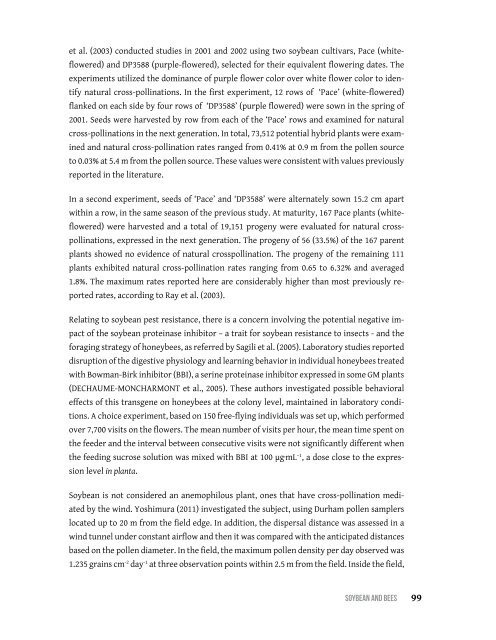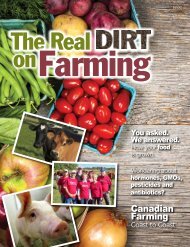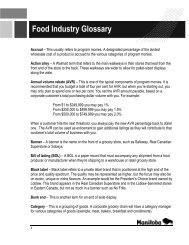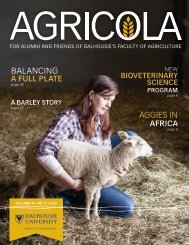SOYBEAN and BEES
BFhV4z
BFhV4z
Create successful ePaper yourself
Turn your PDF publications into a flip-book with our unique Google optimized e-Paper software.
et al. (2003) conducted studies in 2001 <strong>and</strong> 2002 using two soybean cultivars, Pace (whiteflowered)<br />
<strong>and</strong> DP3588 (purple-flowered), selected for their equivalent flowering dates. The<br />
experiments utilized the dominance of purple flower color over white flower color to identify<br />
natural cross-pollinations. In the first experiment, 12 rows of ‘Pace’ (white-flowered)<br />
flanked on each side by four rows of ‘DP3588’ (purple flowered) were sown in the spring of<br />
2001. Seeds were harvested by row from each of the ‘Pace’ rows <strong>and</strong> examined for natural<br />
cross-pollinations in the next generation. In total, 73,512 potential hybrid plants were examined<br />
<strong>and</strong> natural cross-pollination rates ranged from 0.41% at 0.9 m from the pollen source<br />
to 0.03% at 5.4 m from the pollen source. These values were consistent with values previously<br />
reported in the literature.<br />
In a second experiment, seeds of ‘Pace’ <strong>and</strong> ‘DP3588’ were alternately sown 15.2 cm apart<br />
within a row, in the same season of the previous study. At maturity, 167 Pace plants (whiteflowered)<br />
were harvested <strong>and</strong> a total of 19,151 progeny were evaluated for natural crosspollinations,<br />
expressed in the next generation. The progeny of 56 (33.5%) of the 167 parent<br />
plants showed no evidence of natural crosspollination. The progeny of the remaining 111<br />
plants exhibited natural cross-pollination rates ranging from 0.65 to 6.32% <strong>and</strong> averaged<br />
1.8%. The maximum rates reported here are considerably higher than most previously reported<br />
rates, according to Ray et al. (2003).<br />
Relating to soybean pest resistance, there is a concern involving the potential negative impact<br />
of the soybean proteinase inhibitor – a trait for soybean resistance to insects - <strong>and</strong> the<br />
foraging strategy of honeybees, as referred by Sagili et al. (2005). Laboratory studies reported<br />
disruption of the digestive physiology <strong>and</strong> learning behavior in individual honeybees treated<br />
with Bowman-Birk inhibitor (BBI), a serine proteinase inhibitor expressed in some GM plants<br />
(Dechaume-Moncharmont et al., 2005). These authors investigated possible behavioral<br />
effects of this transgene on honeybees at the colony level, maintained in laboratory conditions.<br />
A choice experiment, based on 150 free-flying individuals was set up, which performed<br />
over 7,700 visits on the flowers. The mean number of visits per hour, the mean time spent on<br />
the feeder <strong>and</strong> the interval between consecutive visits were not significantly different when<br />
the feeding sucrose solution was mixed with BBI at 100 μg·mL –1 , a dose close to the expression<br />
level in planta.<br />
Soybean is not considered an anemophilous plant, ones that have cross-pollination mediated<br />
by the wind. Yoshimura (2011) investigated the subject, using Durham pollen samplers<br />
located up to 20 m from the field edge. In addition, the dispersal distance was assessed in a<br />
wind tunnel under constant airflow <strong>and</strong> then it was compared with the anticipated distances<br />
based on the pollen diameter. In the field, the maximum pollen density per day observed was<br />
1.235 grains cm -2 day -1 at three observation points within 2.5 m from the field. Inside the field,<br />
SoybeAn <strong>and</strong> bees<br />
99






